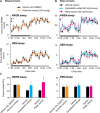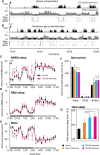Triethylene glycol, an active component of Ashwagandha (Withania somnifera) leaves, is responsible for sleep induction
- PMID: 28207892
- PMCID: PMC5313221
- DOI: 10.1371/journal.pone.0172508
Triethylene glycol, an active component of Ashwagandha (Withania somnifera) leaves, is responsible for sleep induction
Abstract
Insomnia is the most common sleep complaint which occurs due to difficulty in falling asleep or maintaining it. Most of currently available drugs for insomnia develop dependency and/or adverse effects. Hence natural therapies could be an alternative choice of treatment for insomnia. The root or whole plant extract of Ashwagandha (Withania somnifera) has been used to induce sleep in Indian system of traditional home medicine, Ayurveda. However, its active somnogenic components remain unidentified. We investigated the effect of various components of Ashwagandha leaf on sleep regulation by oral administration in mice. We found that the alcoholic extract that contained high amount of active withanolides was ineffective to induce sleep in mice. However, the water extract which contain triethylene glycol as a major component induced significant amount of non-rapid eye movement sleep with slight change in rapid eye movement sleep. Commercially available triethylene glycol also increased non-rapid eye movement sleep in mice in a dose-dependent (10-30 mg/mouse) manner. These results clearly demonstrated that triethylene glycol is an active sleep-inducing component of Ashwagandha leaves and could potentially be useful for insomnia therapy.
Conflict of interest statement
Figures




Similar articles
-
Clinical evaluation of the pharmacological impact of ashwagandha root extract on sleep in healthy volunteers and insomnia patients: A double-blind, randomized, parallel-group, placebo-controlled study.J Ethnopharmacol. 2021 Jan 10;264:113276. doi: 10.1016/j.jep.2020.113276. Epub 2020 Aug 17. J Ethnopharmacol. 2021. PMID: 32818573 Clinical Trial.
-
Water extract of Ashwagandha leaves has anticancer activity: identification of an active component and its mechanism of action.PLoS One. 2013 Oct 10;8(10):e77189. doi: 10.1371/journal.pone.0077189. eCollection 2013. PLoS One. 2013. PMID: 24130852 Free PMC article.
-
Efficacy and Safety of Ashwagandha (Withania somnifera) Root Extract in Insomnia and Anxiety: A Double-blind, Randomized, Placebo-controlled Study.Cureus. 2019 Sep 28;11(9):e5797. doi: 10.7759/cureus.5797. Cureus. 2019. PMID: 31728244 Free PMC article.
-
Rational use of Ashwagandha in Ayurveda (Traditional Indian Medicine) for health and healing.J Ethnopharmacol. 2021 Aug 10;276:114101. doi: 10.1016/j.jep.2021.114101. Epub 2021 Apr 5. J Ethnopharmacol. 2021. PMID: 33831467 Review.
-
Effects of Withania somnifera (Ashwagandha) on Stress and the Stress- Related Neuropsychiatric Disorders Anxiety, Depression, and Insomnia.Curr Neuropharmacol. 2021;19(9):1468-1495. doi: 10.2174/1570159X19666210712151556. Curr Neuropharmacol. 2021. PMID: 34254920 Free PMC article. Review.
Cited by
-
Evaluation of the Sleep-Prolonging Effect of Lagenaria vulgaris and Cucurbita pepo Extracts on Pentobarbital-Induced Sleep and Possible Mechanisms of Action.Medicina (Kaunas). 2018 Jul 31;54(4):55. doi: 10.3390/medicina54040055. Medicina (Kaunas). 2018. PMID: 30344286 Free PMC article.
-
Effect of Ashwagandha (Withania somnifera) extract on sleep: A systematic review and meta-analysis.PLoS One. 2021 Sep 24;16(9):e0257843. doi: 10.1371/journal.pone.0257843. eCollection 2021. PLoS One. 2021. PMID: 34559859 Free PMC article.
-
Triethylene glycol-like effects of Ashwagandha (Withania somnifera (L.) Dunal) root extract devoid of withanolides in stressed mice.Ayu. 2018 Oct-Dec;39(4):230-238. doi: 10.4103/ayu.AYU_219_16. Ayu. 2018. PMID: 31367146 Free PMC article.
-
Herbal Remedies and Their Possible Effect on the GABAergic System and Sleep.Nutrients. 2021 Feb 6;13(2):530. doi: 10.3390/nu13020530. Nutrients. 2021. PMID: 33561990 Free PMC article.
-
Lemon Verbena Extract Enhances Sleep Quality and Duration via Modulation of Adenosine A1 and GABAA Receptors in Pentobarbital-Induced and Polysomnography-Based Sleep Models.Int J Mol Sci. 2025 Jun 14;26(12):5723. doi: 10.3390/ijms26125723. Int J Mol Sci. 2025. PMID: 40565187 Free PMC article.
References
-
- Patchev V, Felszeghy K, Koranyi L. Neuroendocrine and neurochemical consequences of long-term sleep deprivation in rats: similarities to some features of depression. Homeost Health Dis. 1991;33(3):97–108. - PubMed
-
- Zakusov VV, Ostrovskaya RU, Kozhechkin SN, Markovich VV, Molodavkin GM, Voronina TA. Further evidence for GABA-ergic mechanisms in the action of benzodiazepines. Archives internationales de pharmacodynamie et de therapie. 1977;229(2):313–26. - PubMed
MeSH terms
Substances
LinkOut - more resources
Full Text Sources
Other Literature Sources
Medical

